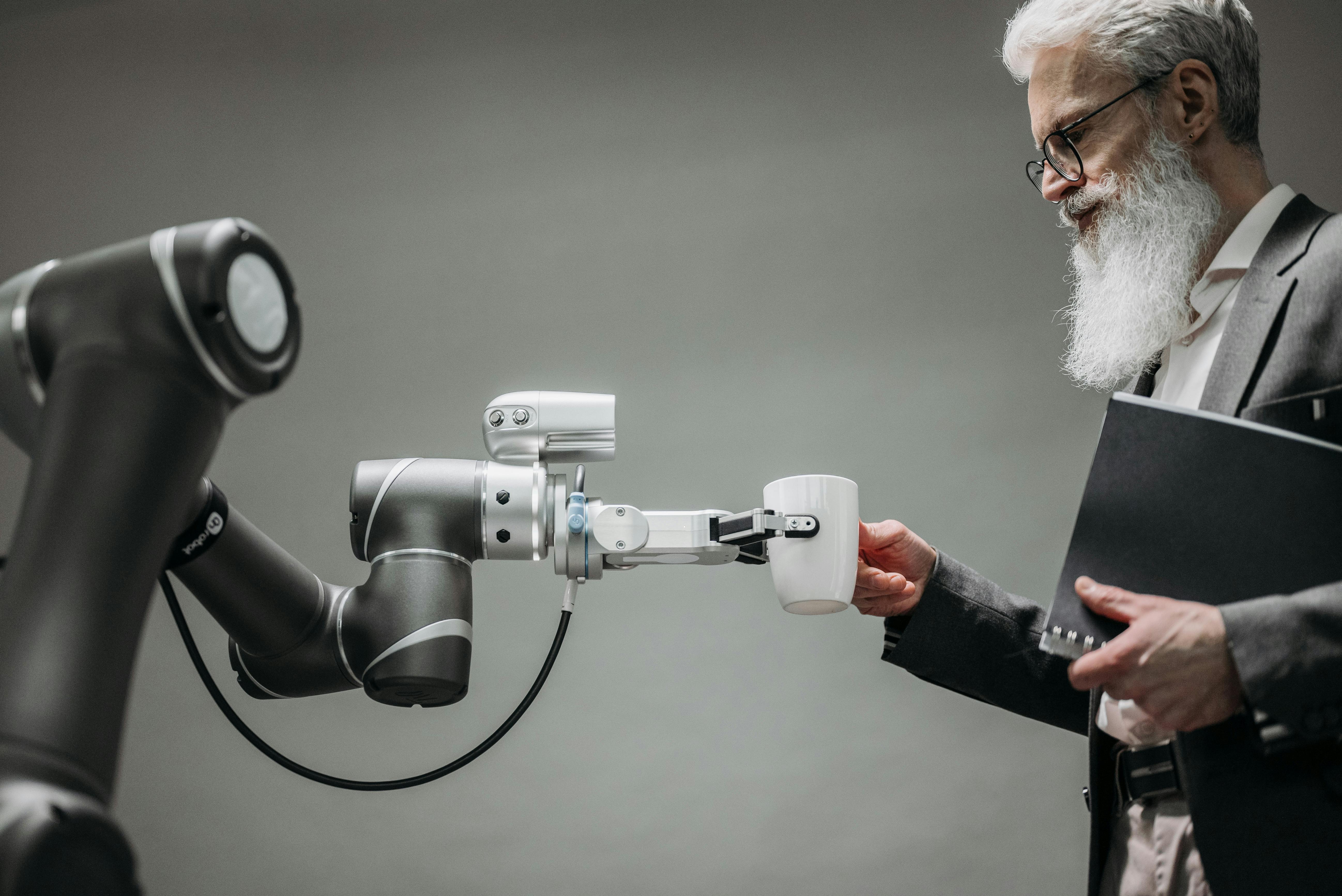Understanding Human Business Output

Human business output is not merely about the tangible deliverables; it encompasses the intangible qualities that humans bring to the table. Beyond the numbers and metrics, human intelligence adds a layer of empathy, intuition, and emotional intelligence to business operations. These traits enable humans to understand the nuances of customer needs, anticipate market trends, and forge meaningful connections with clients and stakeholders.
However, the human element in business is not without its challenges. Human decision-making can be influenced by biases, both conscious and unconscious, which may cloud judgment and lead to suboptimal outcomes. Additionally, human performance can be affected by factors such as stress, fatigue, and distractions, which can impact consistency and reliability.
Despite these limitations, human creativity remains a driving force behind innovation in business. Humans have the capacity to think outside the box, challenge conventional wisdom, and adapt to changing circumstances with ingenuity and resourcefulness. This ability to innovate and problem-solve in diverse situations is a hallmark of human intelligence and is integral to driving business success in a dynamic and competitive landscape.
The Rise of AI in Business
The advent of AI has ushered in a new era of possibilities for businesses across industries. AI technologies, powered by machine learning algorithms and data analytics, have the ability to process vast amounts of data with lightning speed and accuracy. This enables businesses to gain insights into consumer behavior, optimize processes, and make data-driven decisions with confidence.
AI is particularly adept at tasks that involve pattern recognition, optimization, and prediction. From forecasting demand and optimizing supply chains to personalizing marketing campaigns and detecting fraud, AI applications are reshaping business operations in profound ways. Moreover, AI-driven automation is freeing up human resources from repetitive tasks, allowing employees to focus on higher-value activities that require creativity, critical thinking, and strategic decision-making.
Comparing Humans and AI in Business Output
Efficiency and Speed
AI outperforms humans in tasks that require rapid processing of large datasets and complex calculations. AI systems can analyze data at unprecedented speeds, identify patterns, and generate insights in real-time, enabling businesses to respond swiftly to changing market conditions and customer preferences.
Accuracy and Precision
AI excels in tasks that demand precision and consistency. Unlike humans, who may be prone to errors due to fatigue or cognitive biases, AI systems operate based on predefined algorithms and parameters, ensuring a high degree of accuracy and reliability in outcomes.
Adaptability and Learning
While AI is proficient in tasks with well-defined parameters and objectives, it may struggle in environments that require adaptability and creativity. Humans possess the ability to learn from experience, adapt to new situations, and apply judgment and intuition to novel challenges, making them indispensable in dynamic and unpredictable business contexts.
Creativity and Innovation
The realm of creativity and innovation remains a domain where human intelligence shines. While AI algorithms can generate solutions based on existing data and patterns, true innovation often stems from human imagination, insight, and cultural awareness. Humans have the capacity to think outside the box, explore uncharted territory, and create novel solutions to complex problems.
Synergies Between Humans and AI
Rather than viewing humans and AI as competing entities, businesses can leverage their complementary strengths to achieve synergy and maximize productivity. By integrating AI technologies into human-centric processes and workflows, organizations can enhance efficiency, improve decision-making, and unlock new opportunities for innovation and growth.
AI can augment human capabilities by automating routine tasks, providing data-driven insights, and enhancing decision-making processes. Meanwhile, humans can provide context, judgment, and ethical oversight, ensuring that AI applications align with organizational values and societal norms. Through collaborative efforts, businesses can harness the collective intelligence of humans and AI to tackle complex challenges and drive sustainable progress.
Challenges of Integrating AI in Business
Despite its transformative potential, the integration of AI in business is not without challenges. Ethical considerations, such as data privacy, algorithmic bias, and societal impact, must be addressed to prevent unintended consequences and maintain trust with stakeholders. Moreover, the widespread adoption of AI technologies may lead to job displacement and workforce disruption, requiring businesses to invest in reskilling and upskilling initiatives to prepare employees for the jobs of the future.
Conclusion
In conclusion, the comparison between humans and AI in business output is not a matter of superiority but rather a recognition of their respective strengths and weaknesses. While AI excels in tasks requiring speed, accuracy, and scalability, humans bring creativity, empathy, and critical thinking to the table. By fostering collaboration and embracing the synergies between humans and AI, businesses can harness the full potential of both to drive innovation, enhance productivity, and create value in the digital age.

Advice for Business Leaders
As businesses navigate the complex landscape of human-AI integration, it's essential to consider the following recommendations to maximize the benefits and mitigate the challenges:
-
Embrace Collaboration: Instead of viewing humans and AI as competing forces, foster a culture of collaboration where both can contribute their unique strengths. Encourage cross-functional teams that bring together human creativity with AI-driven insights to tackle complex challenges and drive innovation.
-
Invest in Training and Development: Recognize that the successful integration of AI requires a workforce that is equipped with the necessary skills and knowledge. Invest in training programs that help employees develop digital literacy, data analysis skills, and emotional intelligence to thrive in an AI-enhanced environment.
-
Prioritize Ethical Considerations: Ensure that ethical considerations are at the forefront of AI deployment. Establish clear guidelines and protocols for data privacy, algorithmic bias, and transparency to build trust with customers, employees, and stakeholders.
-
Promote Continuous Learning: Encourage a culture of continuous learning and adaptation to stay ahead in an ever-evolving business landscape. Provide opportunities for employees to upskill and reskill in areas relevant to AI technologies and emerging industry trends.
-
Balance Automation with Human Touch: While AI-driven automation can streamline processes and improve efficiency, it's important to maintain a balance with the human touch. Identify areas where human creativity, empathy, and judgment are irreplaceable and ensure that AI technologies enhance rather than replace human capabilities.
-
Monitor Impact on Workforce: Stay vigilant about the impact of AI adoption on the workforce. Monitor trends in job displacement and skill requirements and proactively address any potential challenges through workforce planning, retraining initiatives, and job redesign.
-
Encourage Experimentation and Innovation: Create a supportive environment where employees feel empowered to experiment with AI technologies and explore innovative solutions to business problems. Encourage a culture of curiosity, risk-taking, and continuous improvement to drive organizational agility and adaptability.
By following these recommendations, businesses can harness the full potential of both humans and AI to drive sustainable growth, innovation, and competitive advantage in the digital age.
FAQs
-
Can AI completely replace human workers in business? While AI can automate certain tasks, human creativity and judgment remain invaluable in many aspects of business operations.
-
How can businesses address concerns about AI ethics and bias? Businesses should implement robust ethical frameworks and regularly audit AI algorithms to ensure fairness and transparency.
-
What role does emotional intelligence play in business output? Emotional intelligence enables humans to navigate complex interpersonal dynamics, build relationships, and make empathetic decisions, which are essential for business success.
-
What are some examples of successful human-AI collaboration in business? Collaborative robots (cobots), predictive analytics platforms, and AI-powered customer service chatbots are examples of successful human-AI collaboration in business.
-
How can businesses prepare their workforce for the AI revolution? Businesses can invest in continuous learning and development programs to equip employees with the skills needed to work alongside AI technologies effectively.


You must be logged in to post a comment.